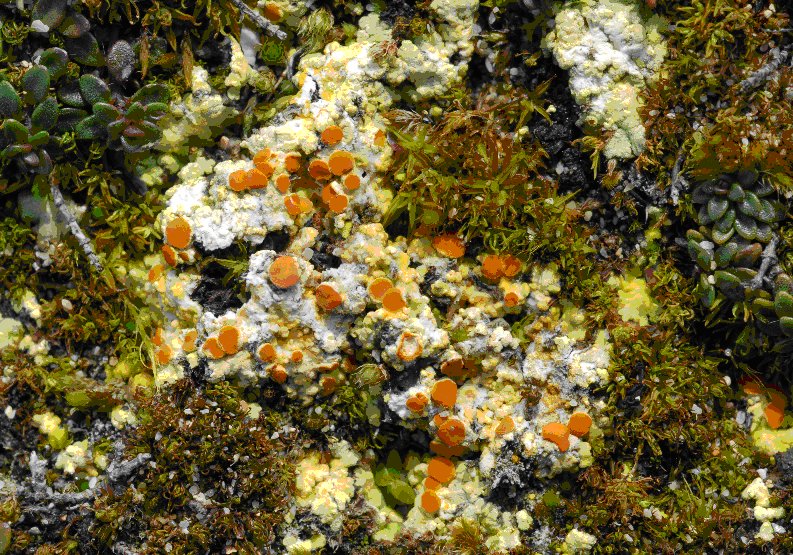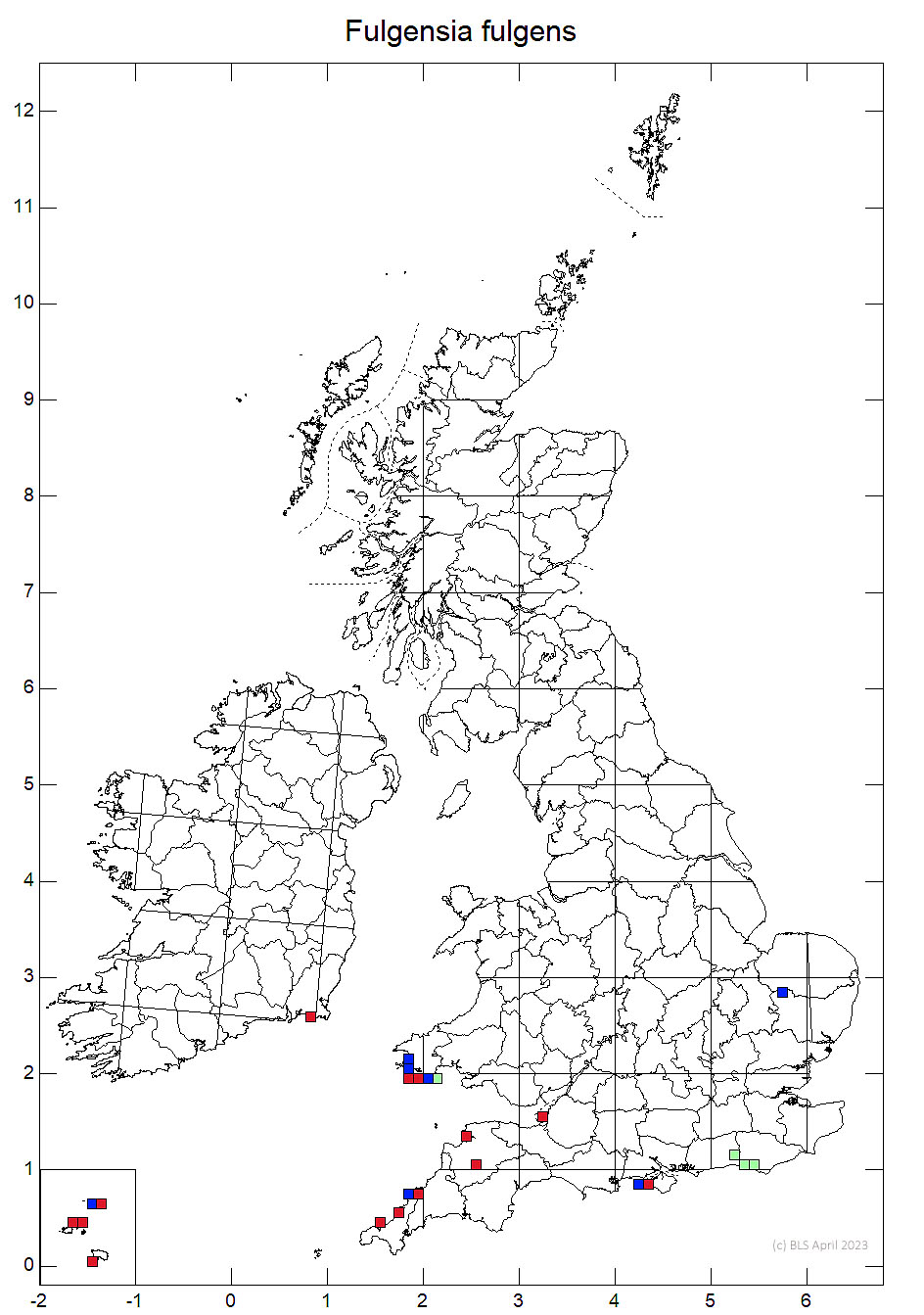Often known as the "scrambled egg lichen"
Easily identified by the non-specialist, Fulgensia fulgens is a squamulose lichen made up of overlapping, lemon-yellow scales, with a lobed margin, and are slightly pruinose. When well developed the thallus is distinctly placodioid. The centre of the thallus is often paler and either has scattered, rounded, dark orange fruits up to 1.5 mm in diameter, and narrow lobe-like vegetative propagules called schizidia, which break off exposing the white medulla. The thallus has a purple reaction (K+ p) when potassium hydroxide is applied due to the presence of the lichen substance Physcion.

Text & Photo from Bryan Edwards
Fulgensia fulgens is a terricolous lichen favouring highly calcareous substrata that in
This species has always been rare in Britain and is currently known from six sites in
| Location | Grid Reference | Last Recorded | Recorder | SSSI |
|---|---|---|---|---|
| Pembroke: Brownslade Burrows, Castlemartin | SR 8890 9862 | 2007 | B. Edwards | Yes |
| Pembroke: Brownslade Burrows, Castlemartin | SR 8904 9860 | 2007 | B. Edwards | Yes |
| Pembroke: Brownslade Burrows, Castlemartin | SR 8937 9781 | 2007 | B. Edwards | Yes |
| Pembroke: Brownslade Burrows, Castlemartin | SR 8963 9782 | 2007 | B. Edwards | Yes |
| Pembroke: Linney Burrows, Castlemartin | SR 896 972 | 2007 | B. Edwards | Yes |
| Pembroke: Pen-y-Holt Down, Castlemartin | SR 9018 9537 | 2007 | B. Edwards | Yes |
| Pembroke: Flimston Bay, Castlemartin | SR 9206 9437 | 2005 | BLS | yes |
| Pembroke: Stackpole SSSI | SR 97 94 | 2007 | B. Edwards | Yes |
| Pembroke: Stackpole SSSI | SR 97 95 | 1978 | P.W. James | Yes |
| Pembroke: Stackpole SSSI | SR 98 94 | 2007 | B. Edwards | Yes |
| Pembroke: Stackpole SSSI | SR 98 95 | 2007 | B. Edwards | Yes |
Stackpole SSSI - detailed locations and grid references are given in Bryan Edwards Stackpole report 2008 (see References below).
| UKBAP Signposting Actions: | |
| 1. | Monitor the extant sites every 6 years to ensure the mossy open calcareous grassland habitat required by this species is being maintained. |
| 2. | The habitat is susceptable to enrichment, and therefore would benefit from a reduction of agricultural and atmospheric pollutants through the implimentation of agri-environment schemes |
| 3. | Where this species is declining trial habitat restoration by turf stripping and moniroting re-colonisation. |
Edwards, B. (2008) Site Dossier and Commons Standards Monitoring for SSSI Lichen Features: Castlemartin Cliffs & Dunes SSSI. CCW Science Report
Edwards, B. (2008) Site Dossier and Commons Standards Monitoring for SSSI Lichen Features: Stackpole SSSI. CCW Science Report
- Log in to post comments

